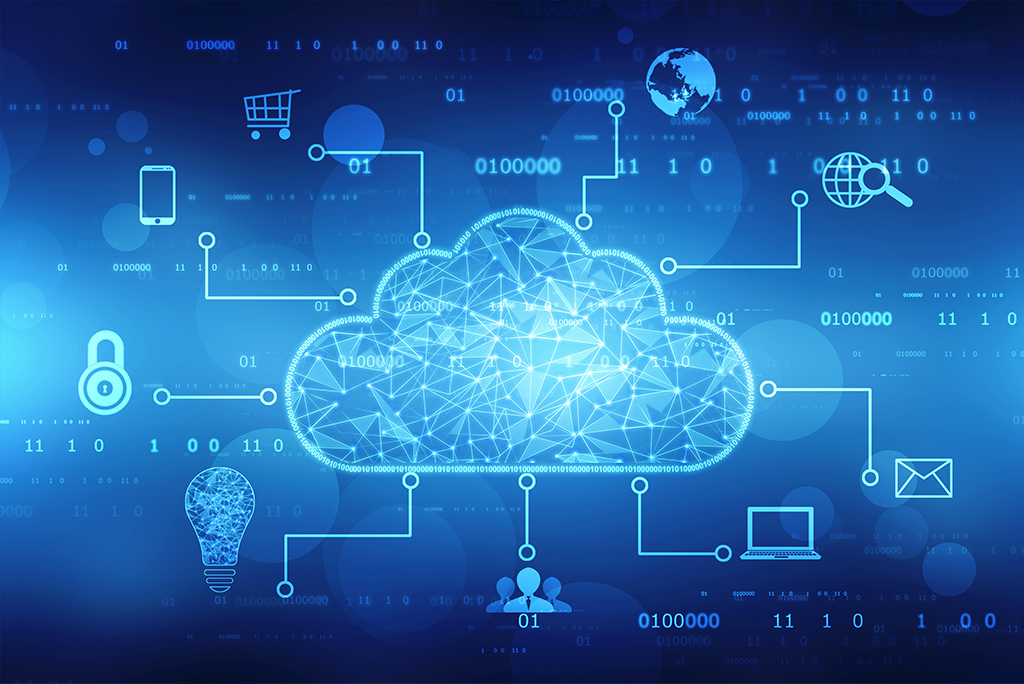Cloud computing has been a disruptive force in the world of technology, and it is still evolving at a rapid pace. As we look ahead to 2024, it’s critical to keep ahead of the curve by knowing new cloud computing trends. These trends will not only shape the technological environment, but will also have an impact on how organisations operate and offer services. In this post, we’ll look at cloud hosting India trends for 2024 that you should be aware of.
1. Edge Computing Integration
Edge computing is gaining popularity because it brings computation closer to the data source, lowering latency and boosting real-time processing. We may anticipate a closer integration of cloud and edge computing in 2024, allowing for more efficient data processing and analysis. This trend will be especially vital in applications like autonomous vehicles, IoT, and smart cities.
2. AI and Machine Learning in Cloud Services
AI and machine learning (ML) are already generating substantial advances in cloud computing. Cloud providers will improve their services even more in 2024 to meet the increased demand for AI and ML applications. This includes better infrastructure, specialised AI processors, and pre-configured machine learning models, all of which make it easier for organisations to leverage the potential of AI.
3. Quantum Computing
While it is not yet commonplace, quantum computing is on the horizon. Quantum computers are substantially faster than regular computers in solving complex tasks. Cloud providers are investing in quantum computing research and development, and more quantum computing services are expected in 2024. Although it is not a major tool for every organisation, it is critical to track its success.
4. Hybrid Cloud Adoption
Because of their flexibility and data security, hybrid cloud solutions, which integrate public and private cloud environments, have gained traction. We should expect a large increase in hybrid cloud usage as organisations grow increasingly reliant on cloud services. Cloud providers will improve their tools and cloud hosting India services to assist in the seamless management and integration of hybrid cloud setups.
5. Serverless Databases
Simply put, serverless databases are a type of database service where the user doesn’t have to manage servers. Users may concentrate on their applications rather than worrying about the underlying server resources, capacity planning, or infrastructure administration.
And serverless databases are trending for a reason. First and foremost, as you can imagine, they are easy to use. Instead of getting bogged down by database maintenance tasks, developers can spend all their energy on app building. Secondly, organizations looking for scalability are also inclining toward serverless databases. These databases can readily handle traffic variations by dynamically scaling up or down based on demand at any given time.
Furthermore, when companies choose serverless databases, they can enjoy automated maintenance which is handled by the cloud provider itself. This implies that developers are not required to do backend maintenance duties such as backups and upgrades. How convenient!
Amazon Aurora, Upstash, Xata, and Fauna are some prominent serverless database providers.
6. Cloud Security
Well, this one is a no-brainer. Since the dawn of civilization, security has always been a major priority of all humans—and cloud security is no different. Because more businesses are going to the cloud, the security and privacy of sensitive data is more vital than ever. So, what’s being done to boost security? Let’s discuss.
Strong encryption is a key part of cloud security. Simply said, encryption renders data unreadable and useless in the absence of the necessary decryption keys. As a result, even if a data thief gains unauthorised access to your system, they will be unable to inflict serious harm. To suit their clients’ security concerns, cloud providers are employing strong encryption mechanisms to keep data safe.
Multi-factor authentication (MFA) has also become common practice in many organisations, and this trend is unlikely to change in the near future. MFA provides an extra layer of protection to prevent unauthorised access by forcing users to submit multiple passwords or one-time codes delivered to their email or telephones.
Moreover, Artificial Intelligence (AI) is also playing a huge role in cloud security. AI-driven threat detection systems detect possible attacks in real time by continually monitoring network traffic, user behaviour, and application records. This allows businesses to respond to cloud security issues before it is too late.
7. 5G Integration
The deployment of 5G networks is altering how data is transported and handled. 5G and cloud computing integration will offer quicker data transmission, lower latency, and greater connection for mobile and IoT devices by 2024. Cloud service providers will respond to this trend by providing optimised services for 5G-enabled apps.
8. Green Cloud Computing
Well, everything ‘eco-friendly’ has been trending for the past few years now, and will likely continue in the following years. Whether it’s food packaging, cosmetic chemicals, or cloud hosting, several businesses have expressed a need for a greener alternative.
So, how does ‘green’ cloud computing work? Cloud companies, for example, are making their operations more sustainable by using renewable energy sources to power their data centres, such as solar, wind, and hydroelectric electricity. They are lowering their carbon footprint by utilising energy-efficient server technology and cutting-edge cooling techniques.
Microsoft has even made its Green Cloud Computing focus public. According to its website, Microsoft’s sustainability efforts focus on three areas:
- Carbon-aware workload scheduling: The tech titan is implementing an innovative optimisation framework to efficiently schedule workloads.
- Resource utilization efficiency: Microsoft intends to maximise the use of current hardware resources. This will help reduce the need for frequent hardware purchases and save energy during manufacturing.
- Hardware lifespan and recycling: Microsoft hopes to increase the lifespan of devices and encourage ethical recycling practises by anticipating hardware failures and implementing effective management systems.
9. Containerization and Kubernetes
Containerization simplifies application deployment and administration by using technologies such as Docker and orchestration tools such as Kubernetes. These technologies will be even more common in 2024, providing enterprises with scalability, flexibility, and mobility. For effective software development and deployment, DevOps teams will continue to adopt containers and orchestration.
10. Data Management and Analytics
The value of data in making business choices cannot be emphasised. Cloud computing will prioritise data management and analytics skills in 2024. Cloud service providers will give improved data storage, processing, and analytics capabilities, magento cloud hosting, and cloud hosting India, allowing organisations to obtain important insights and make data-driven choices.
Conclusion
The cloud computing market is always changing, and the year 2024 promises to bring exciting new innovations and possibilities. To stay ahead in the cloud computing game, you must be aware of and react to developing developments. To stay competitive and inventive in the years ahead, organisations will need to prepare for eight must-prepare cloud computing developments, which range from edge computing and quantum computing to 5G integration and sustainable practices.



